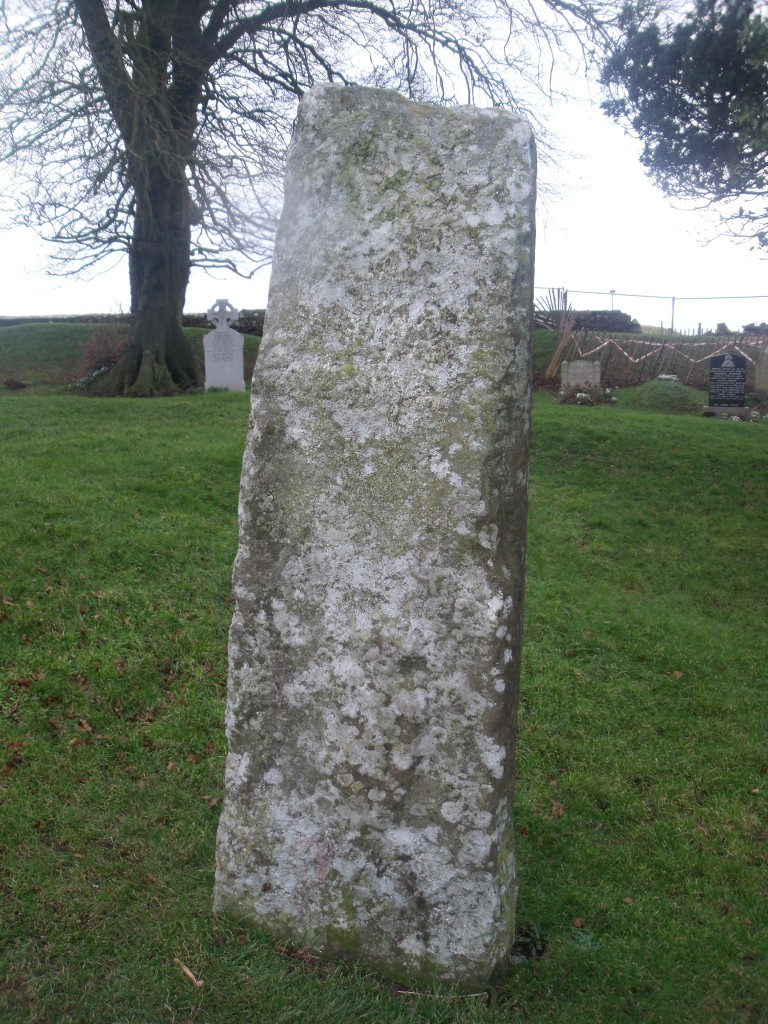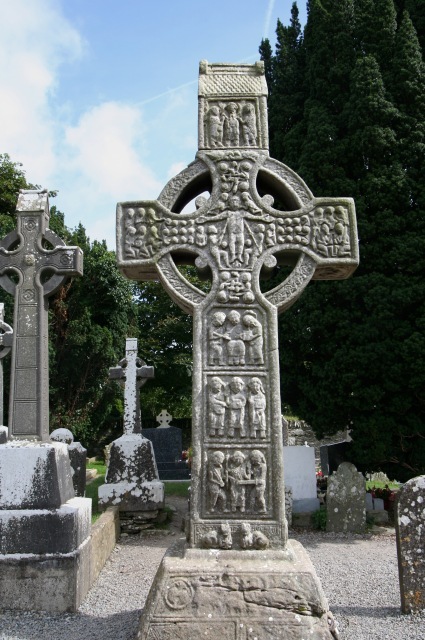8.00 am :Celtic day tour : Depart from the Suffolk Street, at the Old Stone Church near Molly Malone s statue, in Dublin city centre. After he introduced himself, the guide reminds us safety instructions, showed us the monuments of the city we can see ( as O’Connells bridge, for instance), made us a short summary of Irish history and then we set off towards our first stop: Hill of Tara.
9.00 : first stop at the Hill of Tara : an important sacred site and traditional seat : It contains a number of ancient monuments and, according to tradition, was the seat of the High Kings of Ireland.In the middle of the field you can see a standing stone, which is believed to be the stone of Destiny at which the High Kings were crowned. According to legend, the stone would scream if a series of challenges were met by the would-be king. At his touch the stone would let out a screech that could be heard all over Ireland. We also saw the fairy tree, still believed to have magical properties and the stone of fertility as well.
On our way to the next stop, the guide spoke to us about irish music : Enya, the Dubliners, U2, Kodeline, Lord of the Dance and we heard some of the most famous irish songs.
9.45 : short stop at Bective Abbey ( extra, not in the programe ) : which is a cistercian abbey on the river Boyne in a remarkable state of preservation. Bective Abbey was used as a location during the shooting of the 1995 historical action-drama movie Braveheart. The movie was produced and directed by Mel Gibson, who also starred in the title role.
10.00 : Trim Castle. Is known as one of the first castles during the Norman conquests, located on the south bank of the river Boyne in Trim. The best fighting scenes from ” Braveheart ” were also shot there. A guide showed us all types of weapons we used during this period and we took photographs.
11.45 : We arrived at Loughcrew, which is a site of considerable historical importance in Ireland. It is the site of megalithic burial grounds dating back to approximately 3500 and 3300 BC, situated near the summit of ” Sliabh na Cailli ” and on surrounding hills and valleys. Passage tombs on the site are aligned to catch the rays of the winter solstice sunrise. A unique style of megalithic petroglyphs are seen there, including lozenge shapes, leaf shapes, as well as circles, some surrounded by radiating lines.
12.30 > 13.30 : lunch break on the way to Monasterboice.
2.45 pm : Monasterboice. The historic ruins of Monasterboice are of an early Christian settlement in county Lough, in north of Drogheda. It was founded in the late 5th century by Saint Buithe who died around 521, and was an important centre of religion and learning until the founding of nearby Mellifont abbey in 1142.The site houses two churches built in the 14th century or later and an earlier round tower, but it is most famous for its 10th century high crosses, which are the best surviving examples of Irish religeous art, used by the monks to bring the story of Christianity to pagan Ireland.
3.30 : One hour guided tour in Drogheda. We visited Saint Peters church and saw the decapitated head of Saint Oliver Plunkett who was the Roman Catholic Archbishop of Armagh and last victim of the Popish plot. Plunkett was beatified in 1920 and canonised in 1975, the first new Irish saint for almost seven hundred years. Then, we had a break before we continued the guided tour in the city centre toward St Mary Magdalene friary or St Laurence’s gate.
6.00: We arrived back in Dublin after an unforgettable celtic day tour and lots of memories in our minds. ![DSCF3396[1]](http://irishdaytours.holbidev.co.uk/wp-content/uploads/2015/02/DSCF33961-1024x768.jpg)




